If it feels like the stock market’s smooth ride has suddenly hit a few bumps, you’re not imagining things. After a long stretch of relative calm, volatility has returned—and with it, the kind of headlines that can make even seasoned investors uneasy. But while the day-to-day fluctuations might grab attention, they don’t have to dictate your financial future. With a thoughtfully constructed portfolio and a clear long-term plan, you can stay grounded no matter what the market is doing.
The Calm Before the Shake-Up
For months, the market seemed almost too quiet. Then, almost overnight, that calm gave way to sharp swings that reminded investors how quickly sentiment can shift. Renewed global trade tensions, evolving monetary policy, and shifting investor expectations have all added fuel to the fire.
For many, the reaction has been to check their portfolios more frequently—or to question whether they’re positioned correctly. Those are healthy instincts if they lead to constructive conversations rather than impulsive moves. Market volatility isn’t new, but it can serve as a timely reminder to assess whether your portfolio still aligns with your goals and tolerance for risk.
Concentration Risk: When the Market Gets Top-Heavy
One of the biggest questions investors are asking is whether today’s market resembles the late 1990s tech bubble. While history doesn’t repeat perfectly, it often rhymes. A small group of large technology companies now make up an outsized portion of major stock indexes. This means that even if you think you’re broadly diversified because you “own the market,” you may actually be more exposed to a few sectors than you realize.
If your portfolio has become heavily tilted toward technology or a handful of dominant companies, a market pullback in those areas could have a bigger impact than expected. Diversification isn’t about owning dozens of funds or stocks—it’s about owning assets that don’t all move in the same direction at the same time.
Diversification Still Works
Last year, diversification was under attack. U.S. large-cap stocks seemed to be the only game in town, leaving international markets and other asset classes lagging behind. But 2024 has been a reminder that different regions and sectors don’t move in lockstep. Spreading your assets across the globe and across styles—growth and value, large and small—can reduce the risk that any single market event derails your plan.
International equities, for example, have shown signs of renewed strength as global economies adapt to changing trade dynamics and monetary cycles. Meanwhile, smaller and mid-sized companies in the U.S. have begun to show resilience after years in the shadow of mega-cap leaders. For investors, the takeaway is simple: The more sources of return you have, the less dependent you are on any one of them.
Rethinking “Safety” in a Volatile Market
When markets turn choppy, investors naturally gravitate toward safety. But defining “safe” isn’t always straightforward. Bonds, for instance, have historically served as a stabilizer when stocks fall. Yet 2022 showed that even bonds can struggle when inflation surges and rates rise quickly. Still, over the long term, high-quality fixed income continues to play a critical role in managing volatility and providing predictable income.
Rather than trying to guess the next move in interest rates, a better approach is to structure your fixed-income holdings around your personal goals. A simple framework is to set aside a portion of your portfolio—often equal to several years of planned withdrawals—in high-quality, short- to intermediate-term bonds or cash equivalents. This “sleep-at-night” bucket can help insulate your lifestyle from the ups and downs of the market, allowing your long-term investments time to recover and grow.
Building a Cash Cushion Before You Need It
One of the biggest risks in retirement planning is being forced to sell investments during a market downturn to cover living expenses. Yet many people underestimate how often unexpected events—job loss, health issues, or early retirement—can accelerate the need for cash.
Creating a cash reserve while you’re still working (or early in retirement) can make a tremendous difference. This reserve doesn’t need to be large enough to fund your entire lifestyle indefinitely, but it should provide several years of breathing room. The goal isn’t to maximize returns in this portion of your portfolio; it’s to minimize the chance that you’ll need to sell growth assets at the wrong time.
The Emotional Side of Investing
It’s easy to think of investing as purely analytical—numbers, charts, and strategies. But successful investing is just as much about managing behavior. When volatility spikes, the instinct to act is strong. We’re wired to want to do something, even if that “something” often works against us.
The key is discipline. A long-term plan built around your specific goals, risk tolerance, and time horizon can help keep emotions in check. For most investors, reacting to every market move does more harm than good. Instead, focus on periodic check-ins—perhaps once or twice a year—to rebalance and realign your portfolio as life circumstances change.
Turning Down the Noise
The financial news cycle never sleeps. Every day brings predictions about where markets are heading next or which investment will outperform. While staying informed is valuable, tuning out the short-term noise is often one of the healthiest decisions an investor can make.
The reality is that markets have always experienced cycles of volatility. They correct, recover, and rise again over time. Long-term investors who stay invested, rebalance strategically, and resist the urge to chase performance tend to fare better than those who try to time every twist and turn.
The Takeaway: Stay Invested, Stay Balanced
Volatility isn’t a sign that something is broken—it’s a normal part of the market’s rhythm. In fact, it’s the reason long-term investors are rewarded over time. The best response to market uncertainty is preparation, not prediction.
A diversified mix of assets, a clear understanding of your withdrawal needs, and a plan for periodic reviews can help you stay calm when the headlines turn alarming. If you haven’t revisited your financial plan recently, now may be a good time to sit down with your advisor. Together, you can ensure your portfolio reflects not just where the markets are—but where you want to go.
Because while you can’t control volatility, you can control how you respond to it—and that’s what truly determines long-term success.











